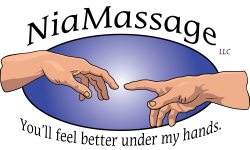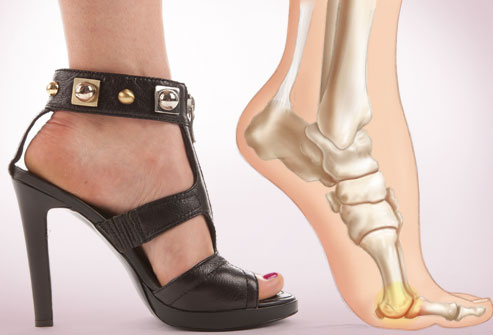I hear more often than not “I don’t have time to get a massage, even if you came to my office.” So from what I understand, you are OK with dealing with pain and stiffnness in your:
Neck and Head – Leaning forward toward computer desktop monitors, laptop and smartphone screens contribute to a stiff neck and eyestrain. Taking frequent breaks to have your eyes focus on more 3-D objects approximately 20 feet away can help your eye muscles relax, and not be contracted to focus on flat, 2-D objects closer to your face.
Shoulders– Your ears and your shoulders should be like exes; Aware of each other, but nowhere near one another. Your shoulders should be relaxed, and not rolled forward
(slouching posture). If you lean against a wall, your shoulder blades shouldn’t be the only things touching the wall. Stretch your pecs in the doorway, doing a forward lean, to help release the tension in your shoulder blades.
Lower Back – Locking your knees does nothing good for the lower back. It tightens and compresses all the lower back muscles in to one small area. Remember when you sat in the back seat of the car as a child on long road trips, all stuffed and cramped back there? Well, now you know how your lower back feels! Bending your knees slightly, not so bent that you are slouching, will help all muscles responsible work together to help you stand better, be more agile on your feet, and tilt your pelvis to give your lower back muscles more room to move.
High Heels– I know, your legs look GREAT in your favorite pair of stilettos, but being in
those shoes does more harm than good. You already know about your Achilles tendon shortening, heel pain, hammer toes, and your toes crammed into too small of a toe box contributes to bunions with prolonged use of high heels. What about your overall posture, hip displacement and muscle pain, especially your calves, shins because you’re walking on your tiptoes? Massage would be great to help your muscles in your lower back, thighs and calves feel better and help articulate your ankle to improve mobility.
Backs of Legs/ Sitting all Day – We spend WAY too much time sitting down. Whether it is at the computer, behind the wheel, on the couch, et cetera, we weren’t designed to be sitting all day long. Even if we work out after sitting all day, the detriment will outweigh the benefits. Take breaks and walk around throughout the day if at all possible. Stand when you can, and make sure you slightly bend those knees!
Taking care of yourself, a few minutes each day will do WONDERS for your overall health, stress levels, and your personal well-being. If no one has told you, you are definitely worth all the effort that it takes to take care of yourself. If you don’t, how will you do what you love to do?
If you want to feel better at work, talk with your massage therapist to come up with a
customized stretching regimen so that you feel better throughout the day. If I happen to be YOUR massage therapist, why haven’t you called me yet?




